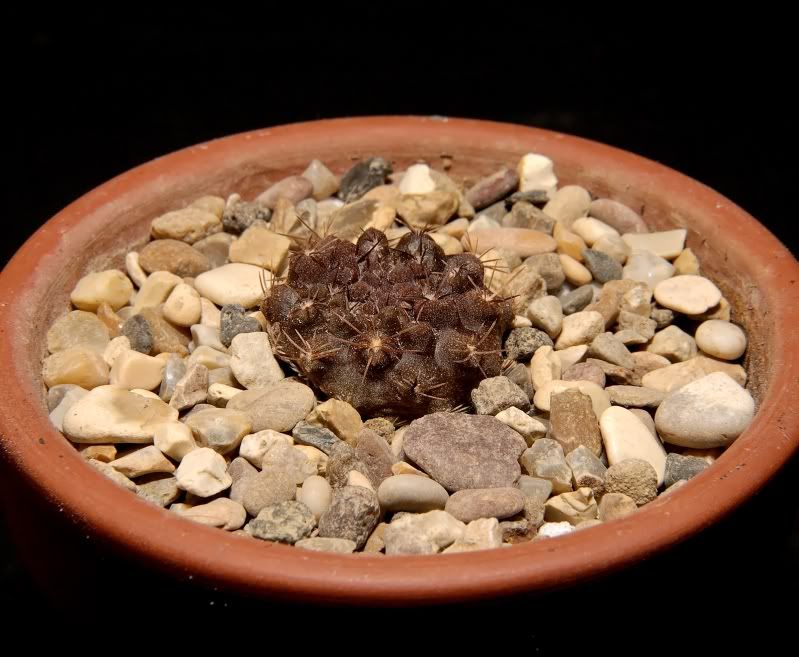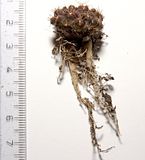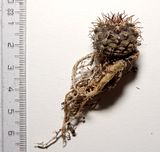Eriosyce occulta JA 81
Florencia Senoret, Juan P. Acosta (Spiniflores)
Las Breas, Taltal, 02 Antofagasta, Chile
Habitat pictures
5 cm (2") clay pot

Roots

[cm/mm]


Yes, I was expecting to wait for yearsiann wrote:Its amazing how some of these flower so early.
If you refer to the E. occulta JA 81 and the roots?The E. occulta looks slightly odd to me.
Those two was labeled as I label them and they came from two different suppliers. First shipment I've got 3 E. occulta and 1 dimorpha, maybe the supplier switched some and I got 4 E. occulta? Last shipment I got only 1 E. occulta and none E. heinrichiana from SuccSeed and he has no E. heinrichiana for sale, except the Eriosyce "heinrichiana" v. simulans FK 82 that have the same type of roots and bigger spines?iann wrote:OK, here's a thought. Could you have the E. occulta and the E. heinrichiana switched?



Could the fat taproot split up into two taproots?iann wrote:The roots were the first thing that looked odd about the E. occulta. This species has a classic fat taproot, a simple extension of the body tapering and sprouting a few fine roots. This is apparent even on quite small seedlings, but not on your plant.
Yes, I've heard about the trouble with E. umadeave and I'll try to somehow get them to germinate. That's why I try to germinate them in a petri dish, so I can find them and chip them later on if nothing happensiann wrote:I had some difficulty getting my seed to germinate. Standard treatment gave me nothing, although E. vertongenii germinated 100% in the same conditions. Phil Crewe germinated his seed quite well with no special treatment. I eventually chipped all the seeds and got about half to germinate. Several of those didn't develop, either I damaged them or they simply weren't ready to grow.
That seedling looks very healthyThe seedlings are now strong and growing spines. They are likely to be prone to losing their roots for the first few years and they don't recover well from this or any other kind of root disturbance. Mine are all in separate pots and I won't touch them for at least a couple of years.
